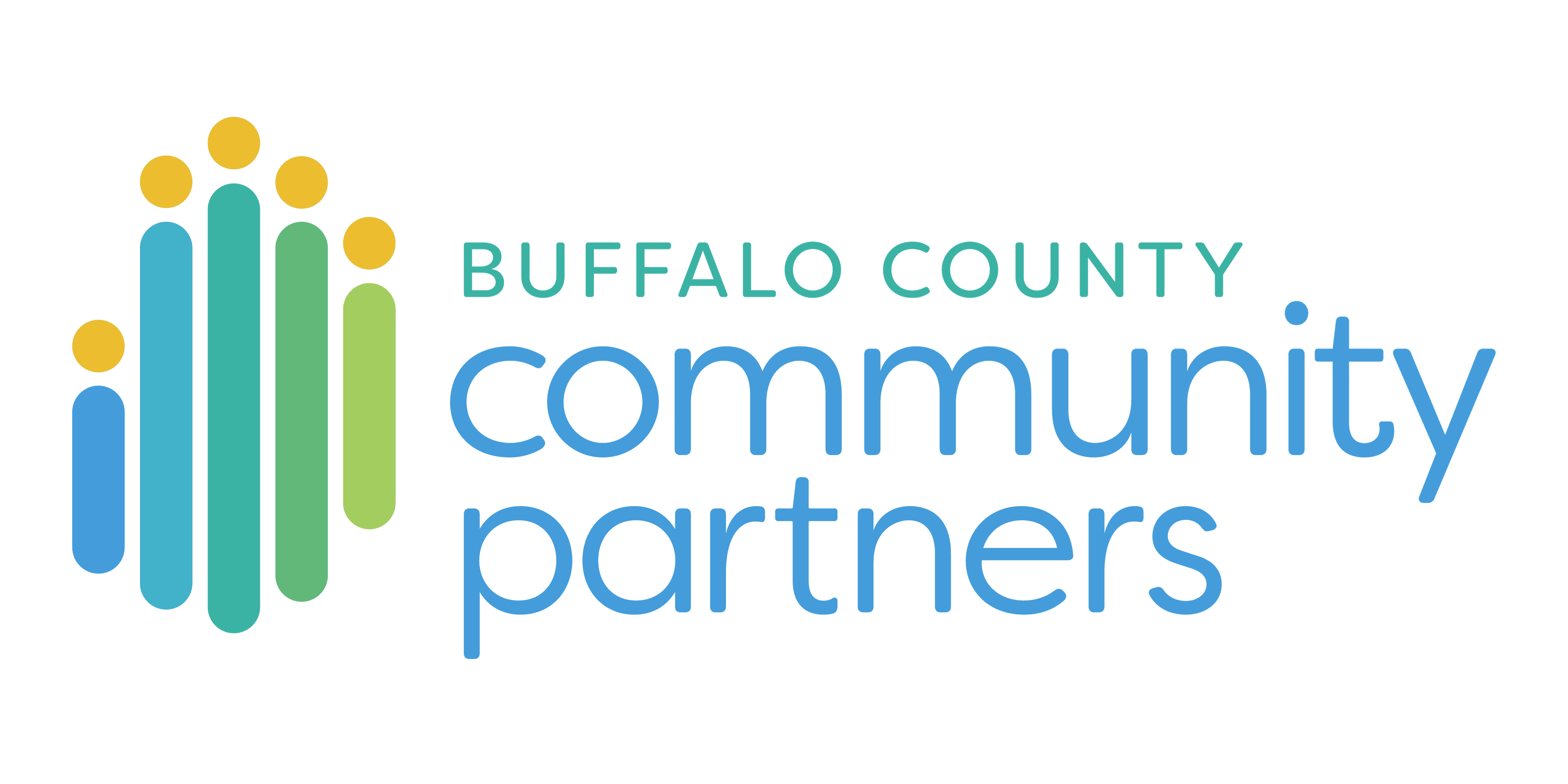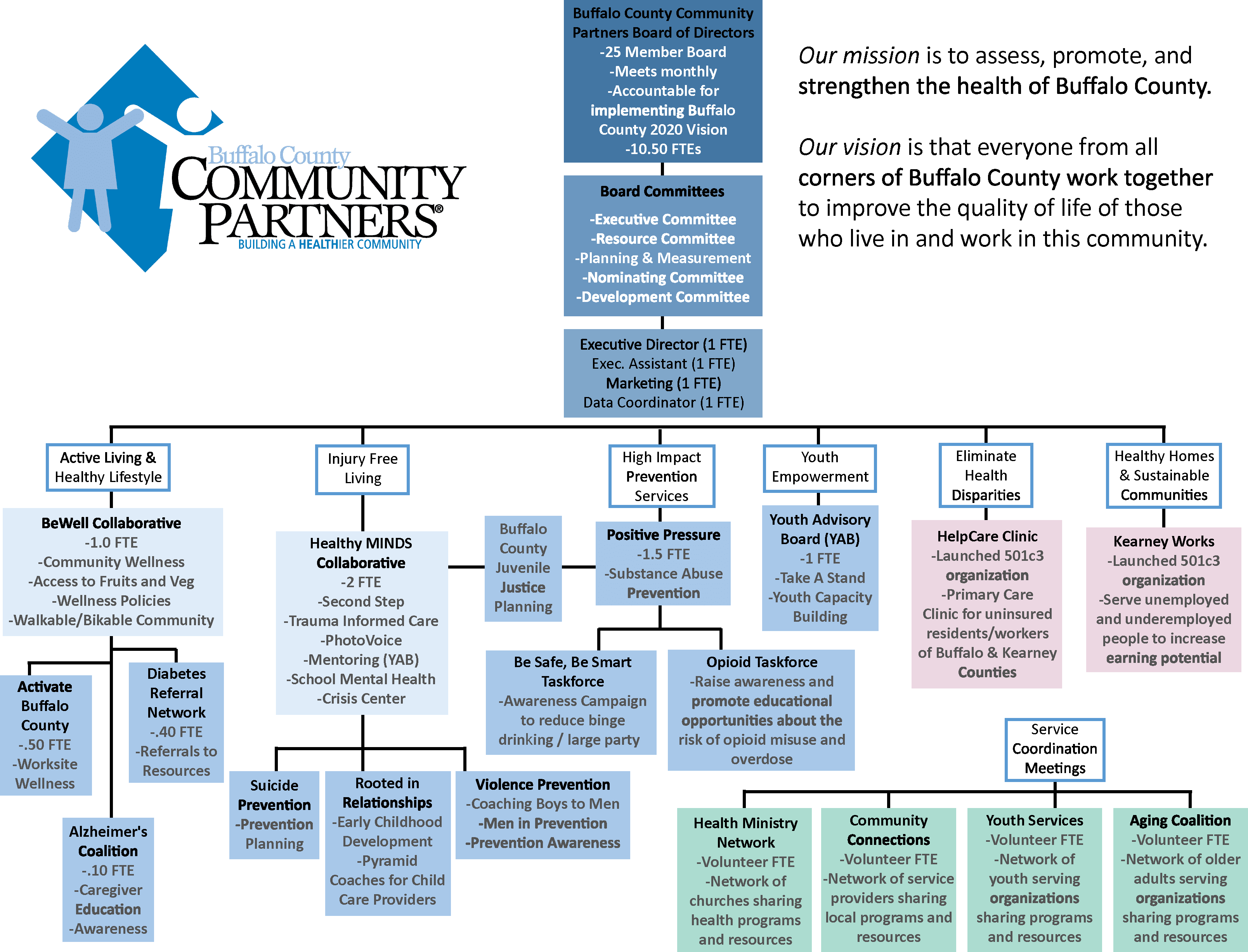The organizational chart describes how the organization is structured from board to employees, to the community coalitions who come together to create a healthier Buffalo County. Click on the chart below to enlarge.
Board of Directors
This body is comprised of a cross-section of community leaders representing a wide variety of constituencies such as local government, schools, human services, providers, business and industry, health care organizations, civic groups, churches, and consumers. The board’s primary responsibilities are to provide project oversight, set policy, recruit members to the initiative, and select the Executive Committee leadership.
Click here to see a list of current board members.
Executive Committee
The board of directors has an Executive Committee made up of the board’s Chairperson, Vice Chairperson, Past Chairman, Secretary/Treasurer, and ex-officio members as the Executive Committee deems appropriate. The officers of the Executive Committee will be the only voting members of the committee. The primary responsibility of the Executive Committee is to focus on operational issues, supervising the activities of Community Partners’ lead staff person, board development/orientation, and generally serve as a working committee for the board.
Board Committee Structure
The board has several committees: the Planning and Measurement Committee, the Resource Committee, the Collaboration Council, and the Development Committee. The structure and purpose of these committees is outlined below.
Planning and Measurement Committee
This committee is responsible for providing the board of directors with long- and short-term planning direction in order to maintain the viability and effectiveness of Community Partners’ vision. This is accomplished by creating an annual operating plan and facilitating the education of the constituency groups and the goal work groups in order to keep projects’ memberships current with healthier communities’ principles and trends. The Planning and Measurement Committee works closely with the Resource Committee to develop an annual budget to support the annual operating plan.
The Planning and Measurement Committee is also responsible for measurement activities related to Community Partners’ projects. This committee will primarily focus on the projects’ goals through the establishment of baseline data and annual determination of rates of change. The group also has the responsibility of recommending to the board any additions, deletions, or modifications to Community Partners’ goals. Coordination of community surveys and the provision of specific support related to data and measurement to other committees also occur through this committee.
Resource Committee
This committee has functions related to identifying, enhancing, and deploying community resources, whether they’re financial, human, or others. This committee ensures the long-term funding of Community Partners’ infrastructure and may assist community organizations in acquiring external funds to support their goals. A resource plan developed by this committee outlines the means and methods related to both human and financial resource acquisition. The Resource Committee works closely with the Planning and Measurement Committee to develop an annual operating plan and budget.
Development Committee
This committee is responsible for designing, implementing, and updating the marketing plan for Community Partners’ fundraising initiatives, and is focused on ensuring the success of these initiatives. The committee will identify Community Partners’ target audience(s) and develop appropriate marketing materials specific to them that embraces an overall theme. They will recruit members and leadership for the annual fund campaign, which is launched each June. They are responsible for meeting the annual campaign goal and training the volunteer workforce.

